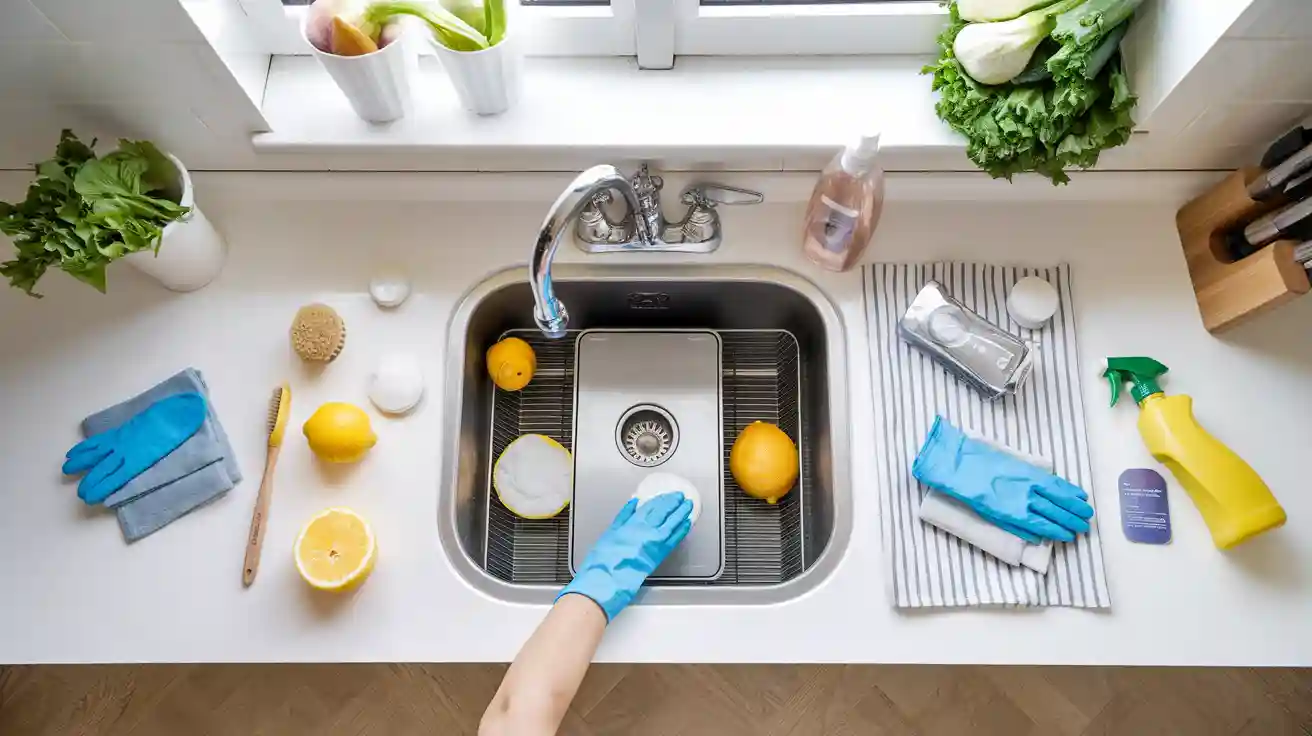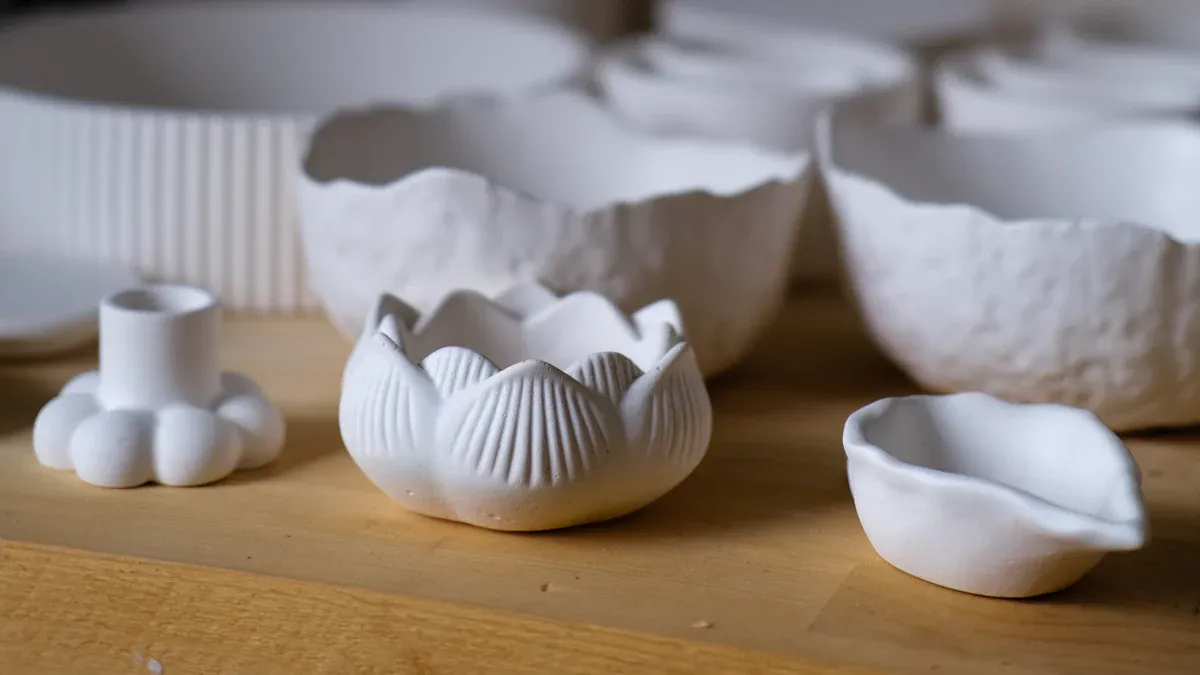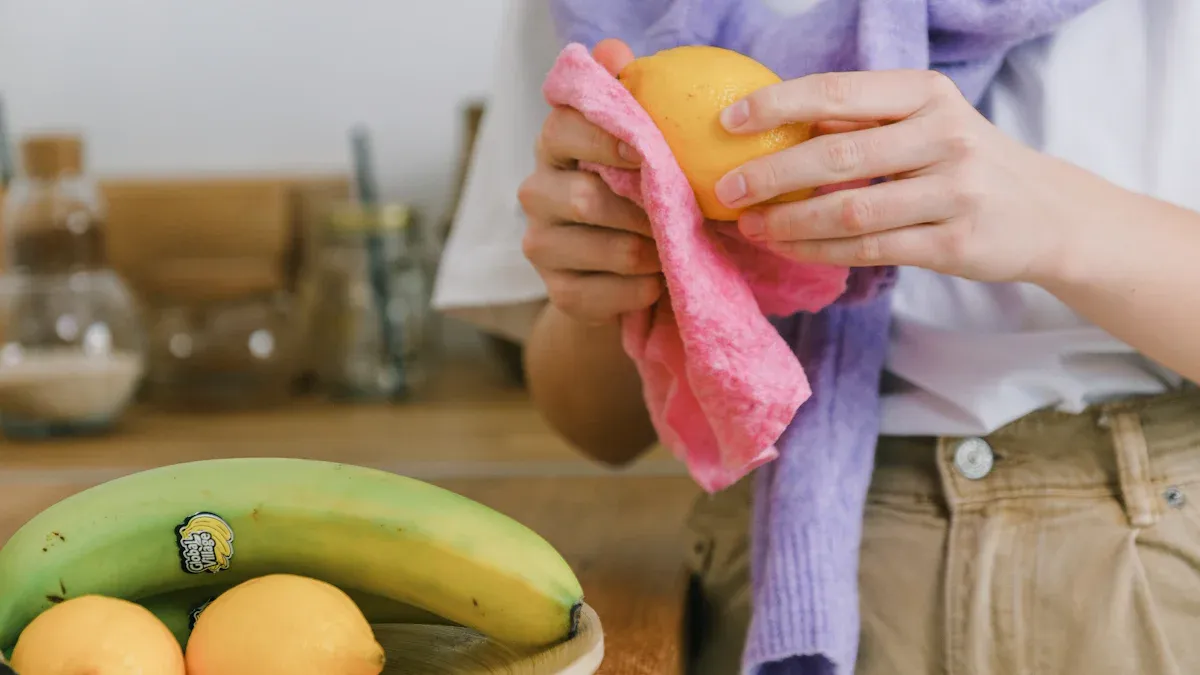
Did you know that half of all U.S. homes have a garbage disposal?
| Year | Percentage of U.S. Homes with Garbage Disposal Units |
|---|---|
| 2009 | 50% |
If you clean your garbage disposal often, you fight odors and keep it working well. You avoid problems like clogs, strange noises, and smelly drains. Simple cleaning methods use everyday items as a food disposal cleaner. You can clean your garbage disposal, remove odors, and prevent issues with easy steps.
Common problems if you skip cleaning:
- Jamming and clogs
- Slow drainage
- Foul odors
Always remember to clean your garbage disposal safely.
Safety Tips Before You Clean a Garbage Disposal
Before you start cleaning your garbage disposal, you need to think about safety first. Taking a few simple steps can help you avoid injuries, damage, or plumbing problems. Here’s how you can keep yourself and your kitchen safe during maintenance.
Unplug or Turn Off Power
Always turn off the power before you do any cleaning. You can unplug the unit under the sink or switch off the circuit breaker. This step keeps you safe from electric shock. Never put your hands inside the disposal, even if you think it’s off. The blades are sharp and can cause serious cuts. If you need to remove a jam, use an Allen wrench from the bottom of the unit instead of reaching in.
Tip: If you drop something like a spoon or ring, use tongs or pliers to get it out. Never use your fingers.
Avoid Harsh Chemicals
Skip harsh chemical cleaners. They can damage your disposal and pipes. Instead, use natural cleaners like baking soda and vinegar. These work well for cleaning and help keep your disposal fresh. Hot water might seem helpful, but it can melt grease, which then hardens and clogs your pipes. Stick to cold water when running your disposal.
Use Protective Gear
Wear rubber gloves to protect your hands from sharp edges and leftover food. Safety glasses can help if you need to look inside the unit. When you clean the rubber splash guard, remove it and scrub both sides. Food bits often hide under the guard and cause odors. Make sure you clean the rubber splash guard every time you do maintenance. This small step helps prevent buildup and keeps your kitchen smelling fresh.
If you follow these safety tips, you lower your risk of injury and keep your disposal running smoothly. Good cleaning habits and regular maintenance help you avoid clogs, jams, and expensive repairs.
Ice Cubes and Salt to Clean Your Garbage Disposal

Why It Works
You might be surprised by how well ice cubes and salt can clean your garbage disposal. Ice cubes grind against the blades and walls, scraping away stuck food and grime. Salt acts as a rough cleaner, scrubbing off slimy and sticky residue. When you use both together, you get a powerful cleaning action that helps remove tough buildup and odor-causing debris. The cold from the ice also keeps grease from sticking inside the pipes, which helps prevent clogs. This method is safe, natural, and does not use harsh chemicals. You can use it as part of your regular routine to keep your disposal fresh and working well.
Tip: Kosher or rock salt works best because it is coarse and scrubs better than table salt.
Step-by-Step Instructions
Ready to clean your garbage disposal? Follow these easy steps:
- Fill the disposal with ice cubes. You want enough to cover the grinding chamber.
- Pour about one cup of coarse salt (like kosher or rock salt) over the ice.
- Turn on the cold water. Cold water helps keep grease from melting and sticking.
- Switch on the disposal and let it run until all the ice is ground up.
- Listen for the crunching sound. That means the ice and salt are working to clean your garbage disposal.
- When the noise stops, turn off the disposal and water.
This process helps dislodge stuck particles, clean the blades, and remove the clog if you have one. You will notice less odor and smoother operation. Try this method once a month to clean your garbage disposal and avoid clogs.
Baking Soda and Vinegar as a Food Disposal Cleaner
Why It Works
You might wonder why baking soda and vinegar work so well as a food disposal cleaner. When you pour baking soda (a base) into your disposal and follow it with vinegar (an acid), you get a fizzy, bubbling reaction. This is an acid-base chemical reaction that creates carbon dioxide gas. The bubbles and foam help loosen food bits, grease, and odors stuck inside your disposal. The foaming action zaps away the gunk and leaves your sink smelling fresh. Many people like this method because it uses safe, natural ingredients instead of harsh cleaners. You can use these homemade cleaners without worrying about damaging your pipes or disposal.
Did you know? Baking soda and vinegar are not just safe—they are also recommended for commercial disposals. They clean and deodorize without the risk of corrosion that some commercial cleaners have.
Step-by-Step Instructions
Ready to try this easy cleaning trick? Here’s what you do:
- Pour about half a cup of baking soda into your garbage disposal.
- Add one cup of vinegar. You’ll see and hear fizzing right away.
- Let the mixture bubble and foam for 5 to 10 minutes. This gives the reaction time to break down debris and odors.
- After waiting, run hot water down the drain for about a minute to rinse everything away.
You can use this food disposal cleaner once a week to keep your kitchen smelling fresh. It’s a simple way to avoid clogs and keep your disposal running smoothly. If you want a safe and natural option, homemade cleaners like baking soda and vinegar are a great choice.
Citrus Peels to Clean a Garbage Disposal

Why It Works
Have you ever noticed how fresh your kitchen smells after you peel an orange or lemon? Citrus peels do more than just add a nice scent. When you use them to clean a garbage disposal, the natural oils inside the peels release a fresh fragrance. The acidity in citrus fruits, like lemon and lime, helps cut through grease and disinfect the disposal. These oils and acids break down buildup and fight bad odors. Experts say that limonene, found in citrus peels, acts as a natural antibacterial and antifungal compound. You can use any citrus fruit peel—lemon, orange, lime, or even grapefruit. The result is a cleaner, fresher-smelling disposal without harsh chemicals.
Tip: Citrus peels not only deodorize but also help clean a garbage disposal by breaking down sticky residue.
Step-by-Step Instructions
Ready to make your kitchen smell amazing? Follow these steps to clean a garbage disposal with citrus peels:
- Peel a citrus fruit, such as lemon, orange, or lime. Collect about one cup of peels.
- Turn on cold water at your sink. Cold water helps prevent grease from sticking inside the pipes.
- Feed the citrus peels into the garbage disposal while the water runs.
- Switch on the disposal. Let it grind the peels until the noise stops.
- Keep the water running for another 15 to 30 seconds to rinse away any leftover bits.
- Turn off the water and check for odors. Your disposal should smell fresh and clean.
Experts agree that using citrus peels is safe and effective. Just remember to avoid putting hard items or fibrous foods in the disposal. Stick to citrus peels and you will keep your appliance running smoothly.
Dish Soap and Hot Water to Clean Your Garbage Disposal
Why It Works
Dish soap and hot water make a simple but powerful team when you want to clean a garbage disposal. Dish soap cuts through grease and grime, while hot water helps wash away the loosened mess. An expert from The Spruce says that if you have a small amount of grease in your disposal, dish soap and hot water can break it down and help it move through the pipes. This method works best for light cleaning and freshening up your sink. You do not need any fancy products—just grab your regular dish soap and let hot water do the rest.
Note: You should not pour large amounts of grease down the drain. Even with dish soap and hot water, too much grease can cause clogs.
Step-by-Step Instructions
You can clean your garbage disposal with dish soap and hot water in just a few minutes. Here’s how you do it:
- Plug your sink drain and fill the basin with a few inches of hot water.
- Add a generous squirt of dish soap to the water.
- Swirl the water to mix in the soap.
- Remove the plug and turn on the disposal as the soapy water drains. This will help clean a garbage disposal by flushing away grime and food bits.
- For extra cleaning, use a long-handled brush or old toothbrush to scrub the splash guard and inside the disposal with dish soap.
- Rinse with more hot water to finish.
Plumbing professionals recommend cleaning the disposal with dish soap every week or at least every two to four weeks. This routine helps keep odors away and prevents buildup. If you use your disposal every day, you may want to clean your garbage disposal more often.
Using Commercial Food Disposal Cleaner
Why It Works
Sometimes, you want a quick and easy way to clean your garbage disposal. That’s when a commercial food disposal cleaner comes in handy. These store-bought cleaners use special ingredients to break down grease, remove odors, and keep your disposal fresh. You can find many options at the store, and some even use natural or biodegradable ingredients.
Here’s what you’ll often find in a food disposal cleaner:
- Surfactants: These help lift and wash away grease and food bits.
- Alkaline builders: They turn fats into soap, making it easier to rinse away grease.
- Acid builders: These dissolve mineral deposits and stop scale from forming.
- Water conditioners: They keep minerals from building up inside your disposal.
- Enzymes: These break down food scraps like starches, proteins, and fats.
- Natural oils and acids: Some cleaners use citrus or plant-based ingredients for a fresh scent and safe cleaning.
Many store-bought cleaners, like Glisten or Affresh, use foaming action or natural extracts to clean and deodorize. You get a deep clean without harsh chemicals.
Tip: Always check the label to make sure the cleaner is safe for your disposal and septic system.
Step-by-Step Instructions
You can use a commercial food disposal cleaner in just a few minutes. Here’s how:
- Read the instructions on your chosen cleaner’s package.
- Drop the recommended amount of cleaner into your disposal.
- Turn on a slow stream of cold water.
- Run the disposal for the time listed on the package, usually 30 seconds to one minute.
- Let the foam or bubbles work for a few more minutes if needed.
- Rinse with more cold water to wash away loosened grime and odors.
Store-bought cleaners make it easy to keep your disposal fresh. Use a food disposal cleaner once a week or as needed for best results.
Regular Flushing to Clean a Garbage Disposal
Why It Works
Regular flushing is one of the easiest ways to keep your garbage disposal clean and working well. When you flush your disposal with water, you wash away food scraps before they can stick and cause problems. Cold water helps solidify grease, so it moves through the pipes instead of sticking and causing clogs. Hot water can also help remove buildup and freshen up the disposal.
Here are some reasons why regular flushing matters:
- You remove trapped food particles that can cause bad smells.
- Cold water keeps grease from melting and sticking inside the pipes.
- Flushing after each use helps prevent clogs and keeps your disposal running smoothly.
- Routine care reduces wear and tear on the blades and motor, so your disposal lasts longer.
- Cleanliness limits bacteria and mold growth, making your kitchen healthier.
- You save money by avoiding expensive repairs or replacements.
Tip: Make flushing your disposal part of your daily kitchen routine. It only takes a minute but makes a big difference!
Step-by-Step Instructions
You can flush your garbage disposal in just a few simple steps:
- Before you turn on the disposal, run cold water for 20 to 30 seconds.
- Turn on the disposal and keep the cold water running while you grind food waste.
- After grinding, let the cold water run for another 5 to 10 seconds to flush the drain line.
- Once a week, flush the disposal with a thick stream of hot water for one minute to help remove buildup and odors.
- Make this a habit every night or after each use to keep your disposal clean and odor-free.
By following these steps, you help prevent clogs and keep your food waste disposer working its best.
You have six easy ways to clean your garbage disposal: ice and salt, baking soda and vinegar, citrus peels, dish soap, commercial cleaners, and regular flushing. Stick with regular maintenance and safe cleaning. Good garbage disposal care means fewer odors, better performance, and a longer-lasting appliance. Natural cleaning helps the environment, too!
FAQ
How often should you clean your garbage disposal?
You should clean your garbage disposal once a week. If you use it a lot, try cleaning it twice a week for best results.
Can you put eggshells or coffee grounds in the disposal?
No, you should not put eggshells or coffee grounds in your disposal. They can cause clogs and damage the unit over time.
What should you do if your garbage disposal smells bad?
Try grinding citrus peels or use baking soda and vinegar. These methods help remove odors and leave your disposal smelling fresh.


